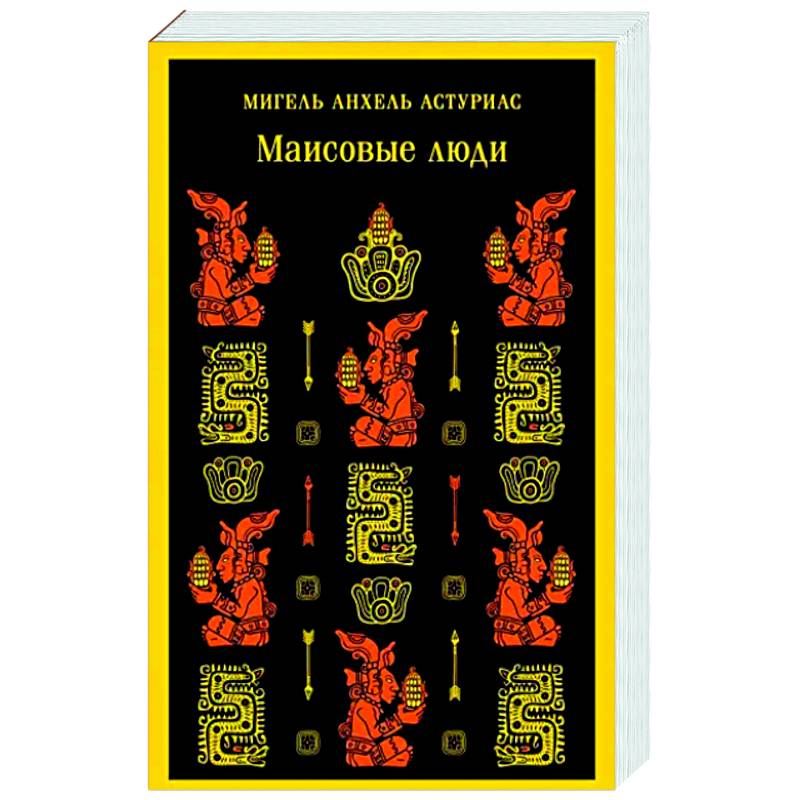Corn people
Please sign in so that we can notify you about a reply
The twentieth century is a "star hour" of Latin American literature. The beginning of the new Latin American prose is considered to be 1949. It was then that the first "magic books" - "Maisian people" of Asturias and the novel "Kingdom of Earth" Aleho Karpenter appeared.
"In them lives the internal energy of the poetic word", - said Miguel Angel Asturias about the novels of Latin American authors.
"Maisian people" capture the reader in captivity from the first words, immerse them in a thick atmosphere of magical realism. Events turn into legends in which you can’t distinguish the truth from lies, but reality from fiction.
The plot of the book is simple. Gaspar Ilom, who is guarded by rabbits with ears from Mais"s leaves, conspired with the Indians to prevent greedy merchants from cutting down and burning the forest near the village of Pisigulito. Many greeders went to the next world from his hand, and then Machohan, an Indian, whom the Spank’s wife redid it in her own way, bought a poison and poisoned Gaspar. But you can’t just kill a person if he is guarded by yellow rabbits, for which there are no secrets, no threats, no distances. The struggle continues. The new chapter begins a new story about a wide variety of people: about a family suffering from curses, about an insightful blind, looking for a fled wife, about a postman, turning around a bed. The action covers both villages and cities. The author shows life as it is, surprised at all its manifestation, from forest animals to wise shamans, from Maisa fields to hurricanes in mountain gorges. All this is his world, his country, his homeland.
In "Maisian people" - the spirit of Guatemala, a story that cannot be found in reference books and encyclopedias. If you are interested in the culture of South America and are not indifferent to the genre "Magical Realism", do not pass by. This is one of the best examples of Latin American literature from a brilliant writer who received the Nobel Prize in 1967
"In them lives the internal energy of the poetic word", - said Miguel Angel Asturias about the novels of Latin American authors.
"Maisian people" capture the reader in captivity from the first words, immerse them in a thick atmosphere of magical realism. Events turn into legends in which you can’t distinguish the truth from lies, but reality from fiction.
The plot of the book is simple. Gaspar Ilom, who is guarded by rabbits with ears from Mais"s leaves, conspired with the Indians to prevent greedy merchants from cutting down and burning the forest near the village of Pisigulito. Many greeders went to the next world from his hand, and then Machohan, an Indian, whom the Spank’s wife redid it in her own way, bought a poison and poisoned Gaspar. But you can’t just kill a person if he is guarded by yellow rabbits, for which there are no secrets, no threats, no distances. The struggle continues. The new chapter begins a new story about a wide variety of people: about a family suffering from curses, about an insightful blind, looking for a fled wife, about a postman, turning around a bed. The action covers both villages and cities. The author shows life as it is, surprised at all its manifestation, from forest animals to wise shamans, from Maisa fields to hurricanes in mountain gorges. All this is his world, his country, his homeland.
In "Maisian people" - the spirit of Guatemala, a story that cannot be found in reference books and encyclopedias. If you are interested in the culture of South America and are not indifferent to the genre "Magical Realism", do not pass by. This is one of the best examples of Latin American literature from a brilliant writer who received the Nobel Prize in 1967
Author:
Author:Мигель Анхель Астуриас
Cover:
Cover:Cover with valves
Category:
- Category:Children's Book
- Category:Fiction
- Category:Modern Literature
- Category:Agriculture
- Category:Poetry & Literature
Publication language:
Publication Language:Russian
Paper:
Paper:Offset
Age restrictions:
Age restrictions:16+
ISBN:
ISBN:978-5-04-181799-2
No reviews found
